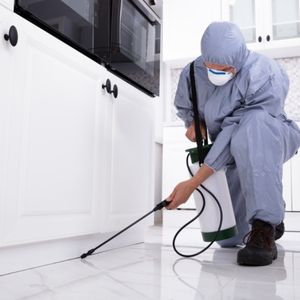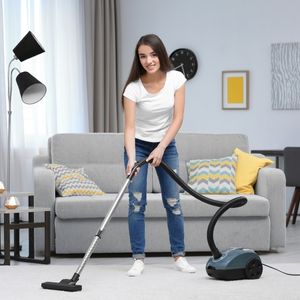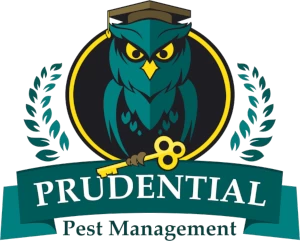Interior Flea Treatment
The Best Interior Flea Treatment Service
We use a pet-friendly interior flea treatment in your home that kills adult fleas and prevents the maturation of fleas in their beginning stages. It is highly effective, and we guarantee our work. We also provide exterior flea treatments.
Flea Treatment Control Warranty
We exterminate fleas in your home while you treat your animals. Our interior flea treatments have a warranty: We’ll continue to retreat your home at no cost. All you need to do is provide proof that a licensed veterinarian treated your animals – or that you’ve purchased Seresto Flea Collars for your pets. These are available at Walmart.
Although Seresto collars are the best over-the-counter product, every animal is different and may react negatively to any pesticide product. Please consult your veterinarian for the best solution for your animals.
Our flea treatment program kills all the fleas in your home.
 Many flea control problems are aggravated due to the lack of understanding and knowledge of the pupal stage of the insect. Even with advanced technologies in pest management, flea pupae have proven to be the hardest to control at all stages of the flea life cycle. Many people believe their flea treatment program is failing, but they don’t understand fleas.
Many flea control problems are aggravated due to the lack of understanding and knowledge of the pupal stage of the insect. Even with advanced technologies in pest management, flea pupae have proven to be the hardest to control at all stages of the flea life cycle. Many people believe their flea treatment program is failing, but they don’t understand fleas.
Stages of a Flea
Fleas develop through a life cycle known as complete metamorphosis. This basic four-stage cycle includes eggs, larvae, pupae, and adults. (Although flea larvae cycle through three larval instars, the larvae are still considered only one of four stages.) Adult females (after feeding and mating) are little insect machines whose life is consumed by three activities: laying eggs, gorging on the blood of their host, and defecating undigested blood in tiny drops. These hardened drops of blood and her eggs are distributed as they fall off the host animal.
After a few days, the eggs hatch, and the first instar of the flea larvae emerge. These larvae locate and feed on the hardened blood drops scattered in the same areas as the flea eggs. After going through a series of molts or instars (flea larvae have a total of three of these instars), they begin building their cocoon, known as the pupal casing. In this pupal stage, the larvae change into fully-grown adult fleas. At the correct time, the adult will emerge from its protected container and begin anew the cycle of locating a host, feeding, mating, and (in the case of the female) laying eggs.
Pupal Casing – Flea Pupae Development- The Use of an IGR with an Interior Flea Treatment
Flea pupae development begins during the third and final instar of the larvae. Flea larvae spin their pupal case with a combination of materials collected in their immediate area, with the help of special silk produced by the larvae. This silky material (produced by the larvae’s saliva) helps bind together debris collected by the immature flea. Home materials include pet and human hair, lint, dust, and fabrics from carpets, furniture, and upholstery. Using these materials, the larvae put together a watertight cocoon that is almost invisible – camouflaged by blending in with its surroundings.
The significant change occurs inside the pupal case: the legless, eyeless worm is changed into a highly developed insect engineered to detect warm-blooded nesting animals, jump high enough and fast enough to latch on to the animal, and feed voraciously from the animal’s blood.
Inside a Flea Pupal Casing
If you were to open a flea pupal casing, you would either find a fully developed adult flea, changing flea larvae, or undeveloped larvae that an insect growth regulator has deformed. An Insect Growth Regulator (aka IGR – like those by Archer and Precor) does not affect any fully developed flea pupae. A larva that an IGR has deformed can live long enough to pupate, but it will never emerge from the pupae stage. IGR sprays only affect the eggs and larvae of fleas.
 The pupal stage only lasts about a week or ten days. Although the change is complete, the fully developed adult flea will not necessarily emerge at this time. Nature has a way of protecting creatures from starvation to the point of extinction. Immediately after appearing, the adult flea must have a blood meal to survive and mate.
The pupal stage only lasts about a week or ten days. Although the change is complete, the fully developed adult flea will not necessarily emerge at this time. Nature has a way of protecting creatures from starvation to the point of extinction. Immediately after appearing, the adult flea must have a blood meal to survive and mate.
If the fleas emerge and there is no suitable host in the immediate area, the fleas will not survive. Nature protects fleas by allowing them to remain in their cocoon (pupal casing) until there is a good chance that a host is close by.
Dormant for How Long?
It is not unusual for the protected flea to remain dormant for several months. Without sensing a possible meal, the flea remains dormant. Many people return home from vacation only to find thousands of fleas they did not know existed before they went on their trip.
Walking around, shutting doors, etc., produces vibrations that cause thousands of fleas to hatch simultaneously – hungry fleas that attack anything that moves in search of a meal.
Animals produce vibrations felt by fleas; they also exhale carbon dioxide and give off heat from their bodies. All of these things are indicators or signals for fleas. When the flea feels vibrations from animal activity, detects body heat, and also senses the animal’s breath’s warmth, humidity, and carbon dioxide, they know that its blood meal is close. The signals of a nearby animal prompt the emergence of the hungry adult flea. The same signals trigger the flea to jump, catching a ride on its intended host.
Controlling Flea Pupae- How it Affects an Interior Flea Treatment
This is the most frustrating part of flea control and is why understanding the dormant stage is so important from an integrated pest management point of view. Most people assume that once a home or lawn has been sprayed or treated, they will not see any more fleas. This is not the case. Pesticide sprays kill adult fleas that are exposed to the spray. Insect growth regulators only affect flea eggs and larvae, preventing them from becoming adults. Flea Stoppers kill flea eggs and flea larvae.
Pesticides, insect growth regulators, and borate carpet treatments (Flea Stoppers) do not kill fleas in their protected pupal casing. The case or cocoon is watertight and not affected by sprays.
 This means that controlling flea pupae involves removing them mechanically (cleaning, vacuuming) and encouraging them to hatch. Your vacuum cleaner is your best friend and most important tool for controlling flea pupae in your home.
This means that controlling flea pupae involves removing them mechanically (cleaning, vacuuming) and encouraging them to hatch. Your vacuum cleaner is your best friend and most important tool for controlling flea pupae in your home.
As mentioned in the development of fleas inside pupae, there are only three possible creatures inside of the pupae: a fully developed flea, a maturing flea, and larvae deformed by an IGR that will not live. Once you have treated your home with a product for eggs and larvae, the next step is to get rid of as many pupae as possible.
Vacuuming carpets, rugs, floors, and furniture accomplishes two critical jobs:
- Picks up pupae that can be disposed of in an outdoor garbage receptacle
- Entices adult fleas to hatch.
Killing Hatched Fleas
Unlike flea larvae, the pupae cannot move about or avoid being picked up by a vacuum cleaner. With the genuine possibility of thousands of pupae lying around in your home, everyone you can remove mechanically represents another adult flea you must put up with or kill. Ridding infested areas of pupae will reduce the number of hatching adult fleas.
As previously mentioned, larvae and adult fleas respond to warmth, carbon dioxide, and vibrations. A fully developed flea that has yet to hatch will react to nearby warm and vibrations. Your vacuum produces a small amount of heat and a great deal of vibration, encouraging developed fleas to hatch out of their pupal casing. If the developed fleas do not hatch, contact insecticides cannot kill them! This bears repeating: contact insecticides kill by contacting (touching) targeted insects. A flea inside the pupal casing cannot get the insecticide – it must emerge (hatch) and come into contact with your insecticide.
 When a flea touches a treated surface, do not expect it to die instantly! The flea picks up a lethal insecticide after moving through the treated surface. This deadly dose will take effect anytime between a few minutes to a day but usually within a couple of hours.
When a flea touches a treated surface, do not expect it to die instantly! The flea picks up a lethal insecticide after moving through the treated surface. This deadly dose will take effect anytime between a few minutes to a day but usually within a couple of hours.
Fleas are Different
Insecticides that have enough residual power to kill ants and roaches for 28 days or more do not have the same residual for fleas. Your best killing power or knockdown for fleas is within two weeks after proper treatment.
For the reasons mentioned here, you can expect to see fleas hatching inside your home for a few days or even as long as eight weeks. You will see an increase in adult flea activity about two weeks after initial treatment. It is at this time that follow-up treatment is often necessary.
To summarize control for flea pupae:
- Vacuum thoroughly and regularly.
- Dispose of vacuumed fleas in a sealed container outdoors.
- Mechanically removing flea pupae is excellent pest control.
- The vibrations of your vacuum cleaner will help the remaining fleas hatch out of their casing.
- Once they have hatched, adult fleas will be exposed to your insecticide treatment.
Prudential Pest Management services the following areas in Michigan:
Genesee County, Tuscola County, Lapeer County, Oakland County, Livingston County, Shiawassee County, Saginaw County, Burton, Clio, Davison, Fenton, Flint, Flushing, Grand Blanc, Linden, Montrose, Mount Morris, Swartz Creek, Gaines, Goodrich, Lennon, Montrose, Otisville, Otter Lake, Clayton Township, Fenton Township, Flint Township, Flushing Township, Genesee Township, Grand Blanc Township, Montrose Township, Mount Morris Township, Mundy Township, Vienna Township, Argentine Township, Atlas Township, Davison Township, Gaines Township, Richfield Township, Thetford Township, and Forest Township. We service all communities in Genesse and its surrounding counties.
